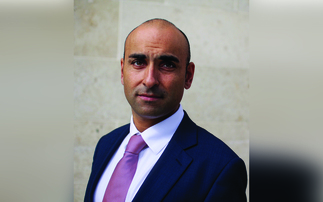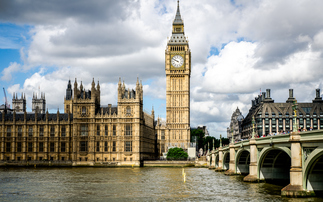
Anthony Willis, Senior Economist, Columbia Threadneedle Investments
US President Trump's mission to reshape global trade with all its supply chain, raw materials, and manufacturing intricacies, will not be a simple task and the knock-on effects will reverberate in markets for a long time.
So, what is the current position with US tariffs and what key events should investors keep in mind?
Legal wranglings: Setback or impediment?
Investors are now focused on the if the legal process undermines Trump's efforts to impose tariffs on trading partners. Earlier in September, a Federal court upheld the ruling of the US Court of International Trade that that President Trump has exceeded his powers by not using Congress to impose tariffs.
So, what does this mean?
Anthony Willis, Senior Economist, Columbia Threadneedle Investments says this is by no means the end of the legal process and that the Trump administration will now appeal the ruling of the lower courts to the Supreme Court.
It is worth bearing in mind that the Supreme Court is Republican leaning and as such could favour the President. In this event it will likely be an end of the matter and tariffs will prevail. If the Court rules otherwise, then there will be continued uncertainty and more serious ramifications," he says.
If the Supreme Court rules against the Trump administration, it will confuse the tariff process and introduce yet more uncertainty. However, there are other ways for the administration to achieve its goals.
President Trump can and probably will continue to use tariffs under the section 232 powers which are already in place on sectors such as steel, autos and aluminium. These can be extended further but doing so involves a process that takes time but ultimately can result in a similar level of tariffs on specific sectors.
The other avenue is via Congress which does have the power to set tariffs. However, that approach will take time and the imposition on individual countries may need specific legislation pushed through.
Markets take a wait and see approach
After months of turmoil, financial markets are looking through the noise and uncertainty and for pragmatism to prevail, at least as far as 100%+ tariffs on China are concerned. However, the administration's view of tariffs as a policy tool is unchanged and the persistent uncertainty remains a headwind for economic growth. If investors see tariffs reduced that will be viewed as positive; should tariffs prevail, then markets have already adjusted to that.
Overall, markets are a lot calmer over tariff risks than the volatility seen earlier this year. Despite all of the ‘noise' President Trump has retreated from some of the more extreme tariff levels but the US is still imposing a considerably higher external tariff rate than we have seen for the past 75 years.
Staying the course: What to expect
Currently, consumer sentiment surveys are soft, though for now this does not seem to be feeding through to consumer spending. The risk to the consumer outlook is from the employment market deteriorating further, which may well see consumers retrench. From a political point of view, the polarisation in US politics prevails, as highlighted by the government shutdown as a result of Congress failing to compromise on a new budget. The Midterm elections next November will be a critical time, and the Trump administration will be mindful that there is not that much more time to push through key policies aims.
If we assume, as normally happens, that the incumbent party loses or does badly in the midterm elections, we can pretty much assume that they will lose control of the house and may lose control of the senate," said Willis.
"That means the last 2 years of Trump's presidency will likely get bogged down in congressional investigations and more scrutiny than we are seeing now," he said.
Next year investors will know more about the impact of tariffs and how much harm they have done.
"The thing to really watch for is the consumer and the labour market, unemployment. If we see unemployment picking up, we could see a move from stagflation worries to recession worries, but we are not there yet," said Willis.
Meanwhile, the dollar is likely to continue a weaking trajectory due to the relative lack of faith in the US as an investment destination and in the dollar as a safe haven. Investors are looking at the Swiss franc, Japanese yen, German bunds, or gold as alternatives havens.
Investment fundamentals prevail through uncertainty
While we still have some way to go on tariff clarity, advisers can steer their clients though policy and economic uncertainty by adhering to four fundamental pillars of successful investing.
1. Diversify
US exceptionalism is likely to continue, but this does not diminish the value of diversification. Spreading investments can potentially lead to smoother, more reliable returns. Investors should consider appropriate sector or geographic diversification.
2. Manage emotions
Heightened emotions often come with increased market uncertainty and volatility. Meanwhile, loss aversion theory indicates that investors feel pain of loss more acutely than the pleasure they get from financial gain. Putting market pullbacks into perspective over the long-term can help manage emotions. Market pullbacks are, and will continue to be, a regular occurrence.
3. Stay invested
Timing the market is impossible, but time in the market over the long-term smooths out the influence of volatility.
4. Think longer term
A focus on education and on long-term trends can help clients helicopter above the short-term volatility.
CT Universal MAP Ranges - Low-cost, active multi-asset options suitable for range of financial planning scenarios.













